colorado
Latest
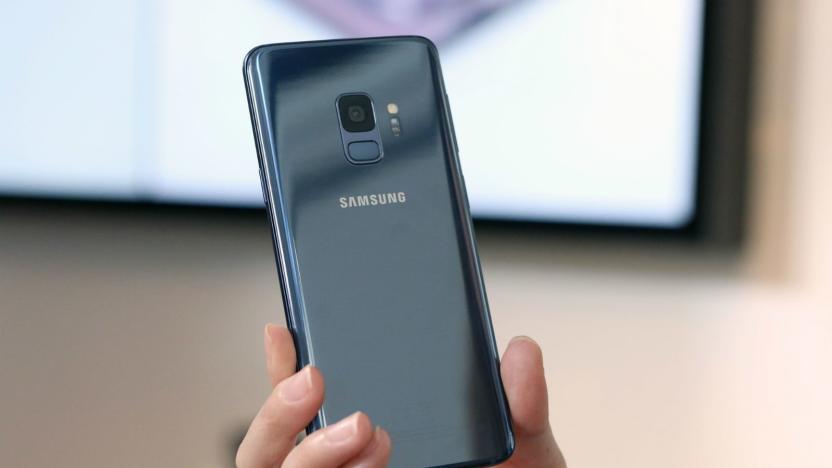
A sheriff's office in Colorado is using Galaxy S9s as body cameras
Deputies in the Kit Carson County Sheriff's Office in Burlington, Colorado, are wearing Samsung Galaxy S9 smartphones on their vests. The phones serve as body cameras and run on AT&T's LTE-based FirstNet public safety platform. In addition to recording footage, they serve as personnel locators, digital cameras and secondary radios.

Chevy's safety feature won't let teens drive without seat belts
Because a chiming dashboard alert isn't enough to get teens to buckle up, Chevrolet introduced a new feature that prohibits drivers from shifting out of park until their seat belt is fastened. The "Buckle to Drive" system includes visible and audible alerts, and the company says it's an industry first. It only runs when Teen Driver mode is active -- so adults can risk driving seat belt-free if they choose -- and it will be standard in the 2020 Chevrolet Traverse, Malibu and Colorado.
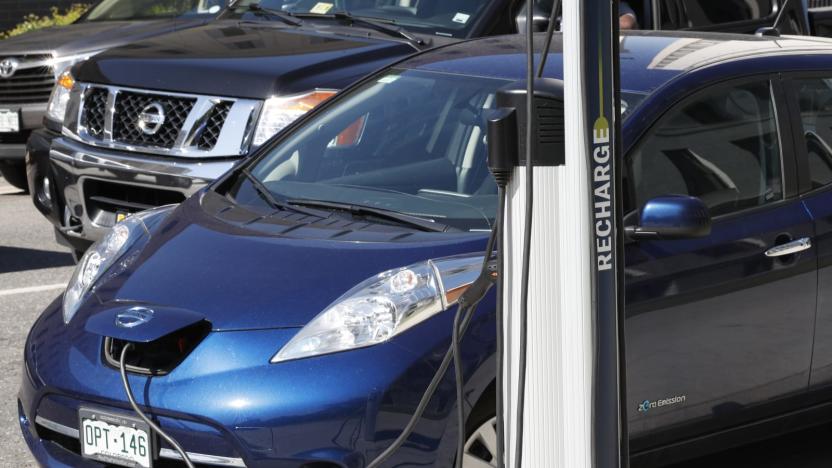
Colorado hopes to fine gas car drivers who park at EV stations
It's already hard enough to find an electric car charging station, but it's worse when you have to deal with passive-aggressive types (or just inconsiderate folk) who park their gas-based cars in those stations. Colorado, at least, wants to do something about it. The state's House of Representatives recently passed a bill that would fine drivers $150, plus a $32 surcharge, for parking a combustion engine car in a space reserved for EVs and plug-in hybrids. It would deliver a similar punishment for EV drivers who leave their car unplugged at parking lot chargers for more than 30 minutes, with exceptions for lodging, airports and overnight.

Amazon opens its second '4-star' store in Colorado
Amazon isn't wasting too much time in expanding its 4-star brick-and-mortar concept, as it opened a second location in Lone Tree, near Denver, Colorado on Thursday. It follows the first store, which launched in Manhattan in September, and the company will soon open another in Berkeley, California.
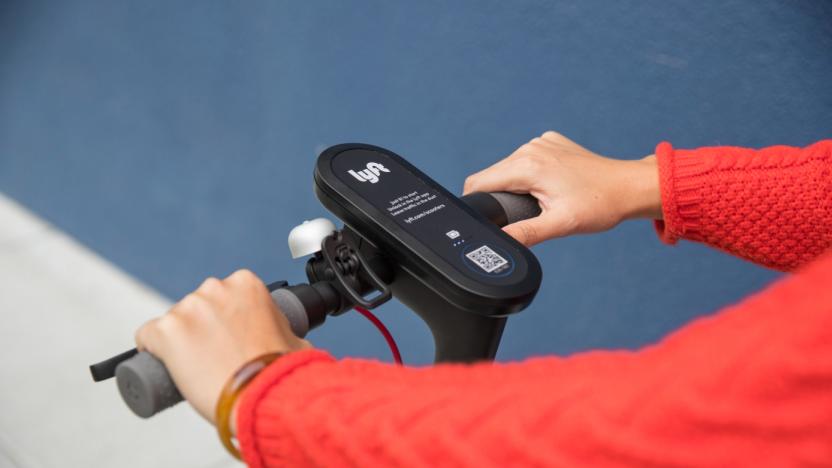
Lyft's first electric scooters arrive in Denver
Lyft is making moves in the electric scooter market, as it is bringing the dockless devices to Denver, the first US city in which it will operate its scooter service. Lyft has permits to operate scooters and electric bikes in the Colorado city, and it's starting out with the former. Around 100 scooters will be centered in areas that are underserved by public transport, helping commuters get to bus and train stops more easily -- the Lyft app will soon alert you when you're close to a stop.

Is Trump serious about legalizing weed?
No matter how many handy gadgets we recommend, the 4/20 holiday is legally tenuous for tokers in the 21 (mostly red) states that don't allow for recreational or medical marijuana use. But that could change with a word from the president. A week after promising Colorado's Republican senator that the feds would keep their hands off state-sanctioned marijuana operations, Trump has the opportunity to make good on his word. Will he?

Report: Cambridge Analytica hasn't deleted all of its collected data
According to Cambridge Analytica, it already deleted the Facebook data it collected from 50 million users years ago -- it even announced that it's undertaking a third-party audit to verify that claim. Based on a new report by UK broadcaster Channel 4, though, that might not be true at all. The broadcaster says it has discovered a cache of the data CA harvested, and it contains information on 136,000 individuals from Colorado, including their personality results and psychological profiles created from the info the firm collected.

Denver will test its own Hyperloop-inspired transport system
Colorado's Department of Transportation has teamed up with Arrivo to use Hyperloop-ish technology to connect the city of Denver. The partnership is looking at ways to use vacuum tubes to reduce congestion and create a local transport area that bridges distances far faster than at present.
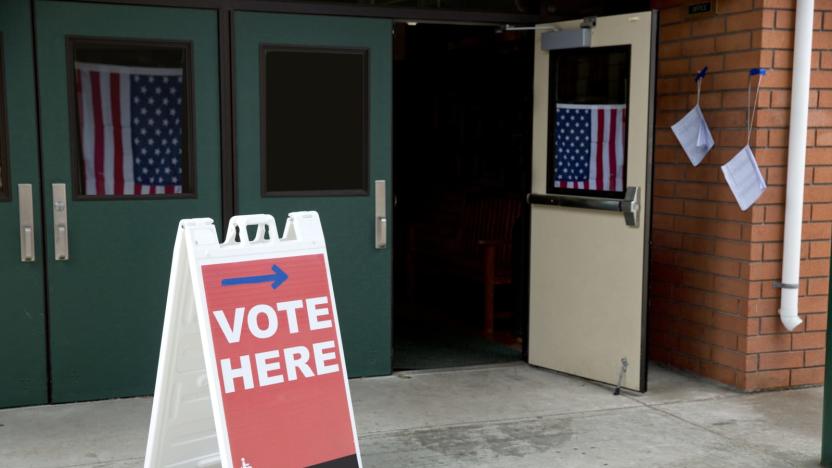
Colorado voters really want city-run broadband service
Internet access and quality varies widely depending on where you live in the US. There's a huge rural broadband gap that the FCC, companies like Microsoft and the Trump administration have said they'd like to close in the coming years and as Cleveland's situation shows, service can be drastically different even within the same city. One solution that has been proposed as a fix for spotty or inadequate broadband service is city-run internet, and it's one that Colorado communities are continuing to back.

Volkswagen is building an electric supercar to tackle Pikes Peak
Last month, Volkswagen laid out a roadmap for its EV rollout, promising 300 zero-emissions vehicles by 2030. While it's certainly good PR to move the company beyond its lingering diesel scandal, it also follows other automakers that recently committed to electric vehicle fleets. But to really seal the deal, VW has a new stunt in the works: It's creating an all-electric sportscar for next June's Pikes Peak high-altitude race in Colorado.

Denver has the fastest WiFi of any airport in North America
Airports are some of the most miserable places on earth. On top of being charged way too much for food and booze, solid internet connections can be dodgy whether you're connecting to provided WiFi or your cellular network. The folks at Speedtest have done us all a favor and surveyed the offerings at North American airports to suss out the worst to the... surprisingly not-worst. Interestingly enough, a state that legalized recreational marijuana also has the highest uploads and downloads. Denver International boasts 78.22 Mbps downloads and 78.29 Mbps on average, with Speedtest reporting that this actually increased by over 25 percent since its last look.

We've never seen global sea ice levels this low before
The world climate has passed another troubling milestone this year: global sea ice levels are at the lowest level ever recorded. New research from the US National Snow & Ice Data Center in Boulder, Colorado indicates that the normal winter buildup of floating ice around the arctic simply isn't happening this year, though it might not be exclusively because of global warming.
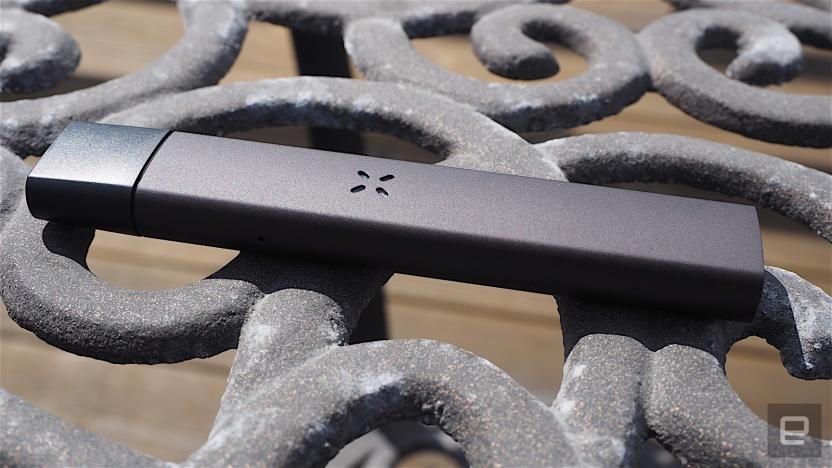
The Pax Era aims to be the Keurig of vaporizers
Out of all the ways to ingest THC, oil concentrates are far and away the messiest, stickiest and most irritating method. Unlike shatter, crumble or even wax, all of which maintain their shape and texture to some degree, oils have a knack for getting everywhere. It's especially tricky when you're trying to dribble minuscule amounts of oil into teensy Smurf-size cartridges used by mixed-media vapes (I'm looking at you, DaVinci Ascent). The new Era pen vape from Pax, however, solves that issue by taking a page out of the Keurig playbook and operating on a pod-based system.

ICYMI: Rubik's phone, underwater bomb bot and more
#fivemin-widget-blogsmith-image-997807{display:none;} .cke_show_borders #fivemin-widget-blogsmith-image-997807, #postcontentcontainer #fivemin-widget-blogsmith-image-997807{width:570px;display:block;} try{document.getElementById("fivemin-widget-blogsmith-image-997807").style.display="none";}catch(e){}Today on In Case You Missed It: The University of Bristol's Interaction Group made a phone prototype out of small cubes that can be flipped around to form different shapes. Saab created an underwater robot to help detect explosives. And Colorado State University students made a real life Mario Kart game with carts that we are dying to experience for ourselves. In case you want to share it with friends, the video for the bottle opener that automatically messages your friends when you open a beer is here. As always, please share any great tech or science videos you find by using the #ICYMI hashtag on Twitter for @mskerryd.

Google alerts the FBI to YouTube comment threatening to kill cops
A Colorado man named Jeremiah Perez has been arrested for a comment he posted on YouTube, threatening to kill "retired helpless cops," which Google itself reported to authorities. Mountain View called up the FBI in San Francisco after someone with the username "Vets Hunting Cops" posted this comment on one of its videos: SINCE DARREN WILSON our group has killed 6 retired sheriffs and cops......because of this event we will hunt two more in colorado this week.....for every innocent citizen that cops kill WE, VETERANS WILL KILL RETIRED HELPLESS COPS...COPS ARE THE REAL ENEMIES OF FREEDOM LOVING AMERICANS and TIME TO STRIKE BACK IN ALL OUT WAR IS NOW.

Road to BlizzCon Day 2: Fruitcake and Fallout
I couldn't even begin to explain why, but I'm fairly certain my comrade-in-arms Anne Stickney insisted on making our BlizzCon road trip an annual event exclusively so she could get a glimpse of a 104-year-old fruitcake. Our itinerary went through numerous iterations leading up to the start of our journey. The fruitcake was struck from the list countless times, but she managed to worm it back in there every single time. At some point, a guy accepts his fate and travels cross-country to see an old, crusty fruitcake. What can you do? I'll let it slide, though. Day 2 of our road trip also included Goodsprings, Nevada, which I insisted on visiting from the beginning. Anyone who has played Fallout: New Vegas will recognize the location: it's the game's first Vegas locale. And, as it turns out, this supposedly-haunted town and its Pioneer Saloon may be recognizable to even those who have never touched a video game. It's been a standby location throughout modern pop culture, its Hollywood breakthrough predating Fallout by many years.

Think before you switch carriers
With a new iPhone or two on the near horizon and plenty of people ready to buy one, there are probably a few million people who are also thinking about switching mobile carriers. Last year, when the iPhone 5 was the newest kid on the block, I decided that I was through with AT&T and I switched to Verizon. Let's just say that I'm now wishing that I had stuck it out with Big Blue instead of jumping to Big Red. Here's my tale of woe, and I hope that it keeps you from making a similar mistake in the next few weeks. My primary reason for switching last year was the incredibly slow and essentially unusable service that I received on AT&T's network when attending Colorado Rockies baseball games at Coors Field in downtown Denver. On certain occasions, it was apparent that AT&T was bringing in COWs (cells on wheels) to provide extra bandwidth for the crowds of 50,000 attending opening day or a special event. But for the most part, trying to use MLB At Bat in the ballpark was a futile effort as AT&T's network just didn't have the capacity. So, I complained. For about two full baseball seasons, one of the first things I'd do at a game was to pull out my iPhone and use AT&T's app to send a network complaint. This seemed to be a fruitless effort, as by the end of the 2012 season, I had seen no improvements in service. That's when I decided to bail on AT&T. I was out of the country when the iPhone 5 first hit, but when I got back, I checked the Early Termination Fee for saying "au revoir" to AT&T and balked at the US$120 or so I still owed on the contract. My initial iPhone 5 order was for the AT&T model... but then I went to my last baseball game of the season and got hit with incredibly slow service again. I canceled my order, and decided to take the hit and move over to Verizon. When I got my Verizon iPhone 5, the first thing I noticed was that the service at my home was as crappy as it had been with AT&T -- I just live in a shadowed area with lousy service, I guess. But I stuck with it, having heard from others that Verizon's service in the Denver area was awesome. Yeah, right. Apparently AT&T had acted on my complaints over the winter of 2012-2013, since when we went to the first Rockies game of the season, my wife -- who had stayed with AT&T -- was amazed with the speed of the service at the ballpark. I figured it was just another COW helping things out and that she'd be griping about the service at the next game. Nope, the service was speedy and reliable for the entire season. Apparently AT&T's nationwide investment in 4G LTE had finally reached downtown Denver and really made a difference. How was my VZW service at the ballpark? Horrible. Oh, on occasion when the Rox weren't pulling in a crowd and the ballpark was relatively uncrowded, I'd be able to get highlights from another game on MLB At Bat, but for the most part, the 4G service was incredibly slow. Regardless of where I seemed to be with the Verizon iPhone 5 over the past year, my wife almost always had better service on AT&T. The kicker was a trip around Colorado we took over the Labor Day weekend. I'd be looking at one bar and "1x" on my Verizon iPhone, while my spouse was happily pulling down maps and information with four to five bars of signal strength on 4G on AT&T. This happened all over the state, from the beautiful Mesa Verde National Park to the high-country town of Ouray. The moral of the story? If you're unhappy with the service and coverage you're getting from your current mobile carrier, think long and hard before switching, as you may be going from bad to worse. Of course, you might not have the same experience I did, and you might have much better Verizon coverage in your part of the world than AT&T does. I don't want to pay another Early Termination Fee to Verizon to switch back to AT&T; perhaps some kindly AT&T rep will read my story and offer to refund last year's ETF if I return to the fold. Please?

Origin Stories: Steve Sande
I certainly didn't start my career with plans to become a blogger and editor at one of the world's most active Apple websites. When I was a child dreaming about a future career path, computer science barely registered on the "What I want to do when I grow up" list since only corporations owned room-sized mainframes at that time and there was no such thing as a home computer. The first time I had any physical contact with a computer was in 8th grade in Aurora, Colorado in the Apollo moon landing year of 1969. The Aurora Public Schools had purchased a Data General Nova (see console photo of a similar model at top of this post) in that year for accounting and scheduling purposes, and some brilliant person came up with the idea of buying some Teletypes that could be used as dialup terminals to allow personnel at the schools to access the main computer remotely. Well, the administrators and teachers at the school weren't all that interested in computers, so guess who started using the Teletypes and Nova to learn how to program in BASIC? The students. Since they wouldn't let us save our programs to paper tape (that would come in about two or three years), any programs we ran were usually quite short out of necessity – we'd type 'em in, run them, try to figure out what the TOO MANY NESTED GOSUBS error meant, and then start all over again. It was fun, but frustrating with no real way to store the programs permanently. In 9th and 10th grade, I was only able to play rarely with the Nova or whatever computer they may have purchased as an upgrade. But when the school announced in 11th grade that the regular algebra class would also be offered in a "computer algebra" version providing access to the school system's minicomputer, I jumped on the opportunity to have a full semester of working with ... the future! Things were a little better at that point. We could save our programs out on paper tape, kind of the "floppy disk" of the era. I think part of the reason we wanted to save to paper tape was that the tape punch created some very good confetti for high school football games... About this time I became very interested in two things; transportation engineering and writing. I had a wonderful high school English teacher by the name of David Faull (still alive and kicking) who really taught me how to write, something I'd need to do in college in those pesky elective courses. I had decided to go into Civil Engineering, and was accepted at the University of Colorado at Boulder. Every engineering student at the time had to take an introductory computer class – CS 101 – in which they were introduced to two things: punch card input and FORTRAN IV. There was nothing worse than sitting down at a keypunch machine with a handwritten FORTRAN coding form, typing in several hundred cards, all of which needed to be read by a machine in order and without typos for your program to run. I can recall hearing of several computer science grad students who had nearly committed suicide after having ultra-long programs scattered to the wind when they accidentally dropped boxes of punch cards... One of my best high school buddies, Rick Brownson, was a student at CU at the same time in the Electrical Engineering department, and I recall that in 1976 he introduced me to an amazing game –- Lunar Lander –- that displayed vector graphics in real time onto a round green-screen terminal. We wasted many a weekend hour playing that game in one of the EE computer labs. Rick also introduced me to the nascent world of personal computing around that time, as he and I soldered chips into a MITS Altair 8800 kit in late 1975. I really wasn't all that impressed with the Altair, since when we finished it there was no way for us to connect it to a display (usually an old TV), and we had no keyboard for it. So we flipped switches on the front of the device to enter 8080 opcodes and then looked at the LEDs to see the results. I remember taking a weekend drive to Albuquerque, New Mexico in 1976 to go to a Altair convention of some sorts; the highlight was getting a pirated copy of Bill Gates' Altair BASIC on paper tape from another attendee. At the time I graduated from engineering school in 1978, word was getting out about Apple, but at the time I really didn't see any reason to buy a computer. Even while I was working in my first job and going to grad school, I refused to buy a computer. When I was able to get a Commodore VIC-20 for about $300 I bought one, then when Commodore reduced the price on the C-64 to about $250 the next week, I returned the VIC-20, got a refund, and picked up a Commodore 64. After a short amount of time I found myself hooked. I bought an Epson printer, got the cassette tape drive, and bought the height of communications technology at the time – a 300 baud modem. I quickly found myself on some of the early bulletin board systems of the time. But the Commodore 64 wasn't a "real computer", so when IBM compatible devices started hitting the market I went out and bought a Sanyo MBC-555 PC clone complete with two floppy drives (a Sanyo MBC-550 with only one floppy is shown below)! This is where I got my first introduction to business software, with WordStar as a word processor and CalcStar as a spreadsheet. At this time, I was working for a natural gas pipeline company called WestGas. The company was a subsidiary of a larger electric and gas utility (Public Service Company of Colorado, now part of Xcel Energy), and as a subsidiary we had of control over our destiny. In the fall of 1983, the Vice President of our company came to me to see if I would perform a study of possible uses for personal computers in our company and create a five-year plan to budget the introduction of those devices, so I jumped to the task. Everything was based on costs and benefits, and a calculated rate of return on the investment in IT. In retrospect, a lot of my numbers were probably quite suspect, as they were based on estimates of time savings that most likely never occurred... The final study saw a need for no more than about 15 PCs over the next five years as well as a handful of dedicated IBM DisplayWriter word processors. About the time that my study was completed, there was a lot of speculation in the computer world about Apple's forthcoming Macintosh. I was interested in seeing one, so a few days after they were introduced my boss and I went over to a Nynex Business Center store to take a look. While the mouse, the bitmapped display, and the 3.5" floppy drive were all amazing, the lack of memory (128K) was a real turnoff. Still, I felt as if I had seen the future, and I vowed to get myself a Mac if they ever built a model with more RAM. Towards the end of the year Apple introduced the 512K "Fat Mac", and the company was doing a "Test Drive A Mac" promotion where you filled out loan paperwork, took a Mac home to use for about three days, and if you decided you wanted to keep it they processed the loan. Having the Mac at home really made me fall in love with it, so in December of 1984 I bought my first Mac. Being enthralled with the Mac, I started lugging it with me to work. By this point I was the supervisor of a group called "Special Projects", and my team was charged with a number of things: regulatory compliance, studies, project management, and now IT. Pretty quickly, my co-workers got began to turn into Mac fans, and I started tweaking the five year plan to buy fewer PCs and more Macs. I was also going to a lot of Mac User Group meetings in those days; that was the place to really try out software, as most everyone would bring boxes of floppies as well as the original disks for new applications they had purchased. Copying was rampant, but I don't remember anyone doing outright pirating; if you tried a program and liked it, you'd end up buying it. That was the case for me in 1985 when I tried out a copy of Aldus Pagemaker (the first "professional" page layout application) and then bought the application. At one point, I bragged to our financial manager that I could use the app to lay out our subsidiary's annual report at a much lower cost than sending it out to a traditional printshop; he called my bluff and for the next month I worked with the very buggy 1.0 software to create the report. In the end, I was successful and the finance department decided to get Macs for everyone. In a few more years, the engineering role ended for me and I was a full-time IT manager. Starting in 1987 and through 1994, I attended Macworld Expo in San Francisco. From about 1990 to 1994, I also went to the Apple WorldWide Developer Conference, which was held in San Jose at that point. These were the years of trying to get a new Mac OS off the ground, the intro of the Newton MessagePad, the MPW vs. CodeWarrior battles, and extremely boring keynotes by such luminaries as Michael Spindler and Gil Amelio. I also spent a lot of time using Pagemaker to create printed newsletters for WestGas and for a number of groups I was a member of. While that was a bit of work that I never really ended up getting paid for, it taught me a lot about design, layout, printing, and writing. From 1986 to 1994, I also ran a Mac bulletin board system known as MAGIC (Mac And [Apple II] GS Information Center). This started off on my original Mac 512, and by the time I quit running the BBS and moved to a website, it was a three-phone-line setup running on two networked Macs Including my favorite Mac of all time, a Mac IIcx. The BBS was the "official site" for the MacinTech Users Group, a MUG that's still going strong to this day. My first website was PDAntic.com, a play on John Sculley's acronym for the Newton – Personal Digital Assistant – and the fact that my wife often refers to me as being pedantic. I chose to run the site with news posts written in a reverse chronological order, which means that I was essentially doing blogging in 1994! I was doing some half-hearted development for the Newton at the time, and still have a working MessagePad 2100. 1995 was the start of a bad period for me personally – our pipeline company was swallowed back into our parent company, and then all of us who had any dealings in information technology were outsourced to IBM's ISSC services group (later IBM Global Services). While I won't go into details, it was the worst part of my career, with incompetent and occasionally unethical managers, a strategy that consisted of trying to do more and more work with fewer employees (with predictable bad results), and the most demoralized staff I've ever seen. I survived for nine years, after which I chose to go out on my own. At the beginning of my time with IBM our client (the company I worked for) had a total of over 1,200 Macs company-wide; by the time I left we were down to a handful in the corporate communications department. One of my first IBM projects in 1996 was to move all of the Mac users to Windows 95 –- I should have quit when I was ordered to do that. One bright spot during the years 1999 through 2006 was my participation in a number of Microsoft's Mobius conferences. These were meetings of those of us who ran mobile-oriented websites, with Microsoft showing off concepts and picking our brains for ideas about UI, built-in applications, and the direction of the mobile world. I also met a number of the top bloggers in the mobile space, including Ryan Block and Peter Rojas, who were both instrumental in starting up Engadget. Peter was one of the co-founders of Weblogs, Inc., the blog network that TUAW was a part of before being purchased by our current owner -- AOL. In 2005 I started my own consulting firm, Raven Solutions, to do Mac consulting and support. I became a member of the Apple Consultant Network (ACN), which helped my business to grow quite quickly. I also started writing books at about this time, creating a book called "Take Control of your iPod: Beyond the Music" that is still for sale from Adam and Tonya Engst's Take Control Books. One top moment about this time was seeing Steve Jobs introduce the iPhone at the 2007 Macworld Expo. That was something I'll never forget, and I have a Nitrozac painting of the event within my field of view in my office. In late 2007 I was on a weekend trip to Vegas with my wife when a friend pointed out that one of my favorite Apple sites –- TUAW –- was accepting applications for freelance writers. I turned in my requisite three sample articles, but didn't hear anything ... until April of 2008. I was on a business trip when I received a call from former TUAWite Scott McNulty, who wondered if I was still interested in being a TUAW blogger. He gave me a test that I remember quite well; I had one hour (sitting in an airport waiting for a flight) to write a news post about a new and completely hypothetical Apple product. I zapped it to him via email with time to spare and was offered the job. Since that time I've become a full-time employee of TUAW parent company AOL, I've met thousands of TUAW readers at Macworld/iWorld and other events, written a number of books (many with fellow TUAW blogger Erica Sadun), and published almost 1.8 million words of blog posts. I love sharing time with TUAW fans every Wednesday afternoon on TUAW TV Live, as well as delivering the daily Apple news on the Daily Update podcast. And when I get to join with my teammates for one of the Sunday night Talkcasts, that's like getting together with family. The only way to describe my life right now is as "blessed." I work with a great team of professionals doing what I love to do the most, writing about a company that has had such a huge effect on the course of my career and my life. I don't know how long this ride will last, but I sincerely hope it's for a long, long time.

Recent Apple thefts include high-speed NYC chase, Colorado storefront smash-and-grab
Apple devices keep their value, which makes them an attractive target for thieves. Two recent stories highlight how both individuals and Apple stores are vulnerable to theft. One report involves a movie-like high-speed chase, while the other one features a well-timed smash-and-grab heist. The New York Times has a fascinating story about a thief who stole an iPhone from an unsuspecting lady waiting on a corner. He snatched the iPhone from her hand and took off into the crowded streets of Flushing, Queens. She called police who tracked the culprit using Find My iPhone. They hunted him down by car and by foot, finally locating him on a subway car. The thief was identified when the police placed a call to the stolen device and it rang in his back pocket. In a completely different type of theft, employees at an Apple store in Colorado Springs, Colo., were surprised when they arrived for work on Sunday morning. Instead of a typical opening, the employees were greeted with shattered glass and a store that had been turned upside down by thieves. The photo below was supplied by TUAW reader Dan Mosqueda, who also tipped us about this latest smash-and-grab incident. It shows the front of the store boarded up with black-painted plywood. According to a report by KKTV-11, robbers drove their car into the glass front of the Apple store and made off with an undisclosed amount of electronics. An employee at a nearby store observed the aftermath of the theft and said, "It seems like this was very calculated because they obviously knew when to come here, when the security would not be around." The police are reviewing the surveillance video for information on the car and people involved in this crime.

Regional carrier Strata Networks to carry iPhone 5
After earlier news today that you can move your unlocked iPhone 5 to the Solavei network for some US$49 all-you-can-eat lovin', we've heard of a new regional carrier -- Strata Networks -- that will soon carry the iPhone 5 and provide another alternative to the blue, red, yellow and magenta networks. Utah-based co-op Strata Networks provides local service in the Uintah Basin, the Western Slope of Colorado and parts of Idaho. The carrier recently lit up an LTE network covering the population centers of Utah, and provides 2G/3G service for customers across the rest of the US. At this time, Strata is just taking names for current or potential customers who wish to be notified when the iPhone 5 arrives.











